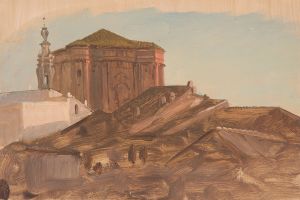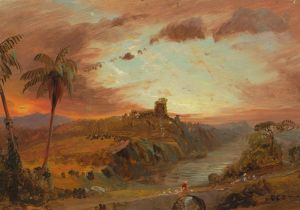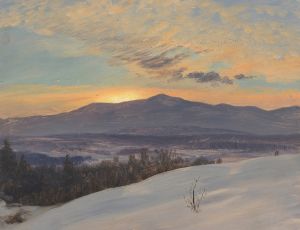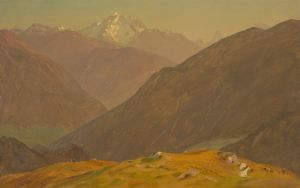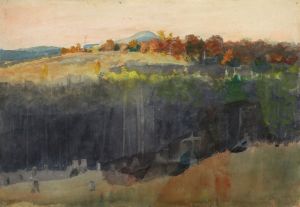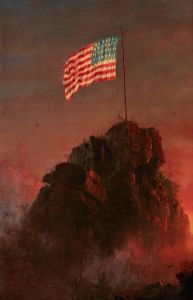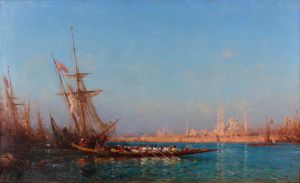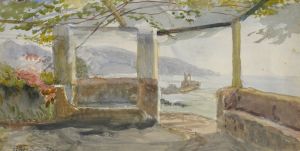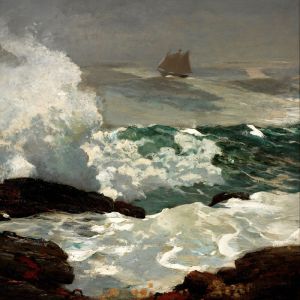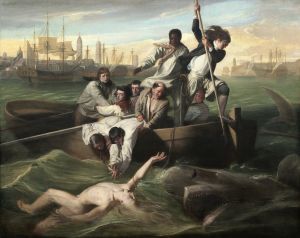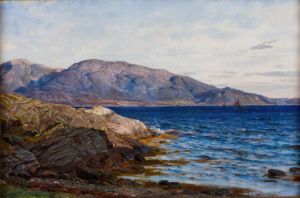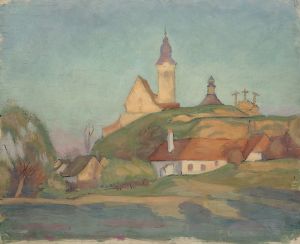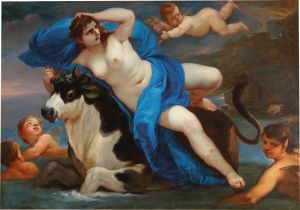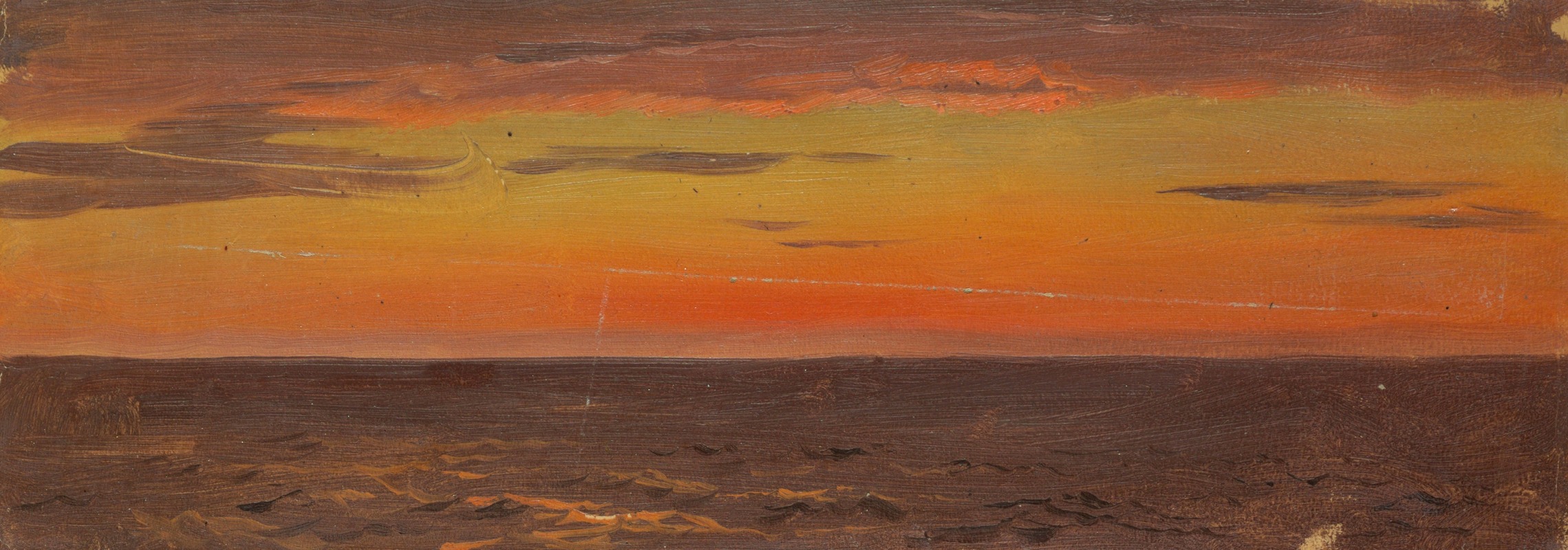
Seascape
A hand-painted replica of Frederic Edwin Church’s masterpiece Seascape, meticulously crafted by professional artists to capture the true essence of the original. Each piece is created with museum-quality canvas and rare mineral pigments, carefully painted by experienced artists with delicate brushstrokes and rich, layered colors to perfectly recreate the texture of the original artwork. Unlike machine-printed reproductions, this hand-painted version brings the painting to life, infused with the artist’s emotions and skill in every stroke. Whether for personal collection or home decoration, it instantly elevates the artistic atmosphere of any space.
Frederic Edwin Church, a prominent figure in the Hudson River School of American landscape painting, is renowned for his grand and detailed depictions of natural scenes. Among his works, "Seascape" stands out as a testament to his skill in capturing the sublime beauty of nature. Although not as widely discussed as some of his other masterpieces, "Seascape" reflects Church's fascination with the natural world and his ability to convey its majesty through art.
Frederic Edwin Church was born on May 4, 1826, in Hartford, Connecticut. He studied under Thomas Cole, the founder of the Hudson River School, and quickly developed a reputation for his meticulous attention to detail and his ability to render light and atmosphere with remarkable precision. Church's works often feature dramatic landscapes, and he is best known for paintings such as "The Heart of the Andes" and "Niagara."
"Seascape" is one of Church's explorations into marine subjects, a theme that, while less frequent in his oeuvre, showcases his versatility as an artist. The painting captures the dynamic and ever-changing nature of the sea, with its interplay of light, water, and sky. Church's seascapes often emphasize the vastness and power of the ocean, reflecting the Romantic era's fascination with the sublime and the awe-inspiring aspects of nature.
In "Seascape," Church employs his characteristic attention to detail and mastery of light to create a scene that is both realistic and evocative. The painting likely features a dramatic sky, with clouds that are rendered with a keen sense of movement and depth. The sea itself is depicted with a range of colors and textures, capturing the play of light on the water's surface and the movement of waves. Church's ability to convey the transparency and reflectivity of water is particularly notable, as it adds to the painting's realism and emotional impact.
Church's seascapes, including "Seascape," are often compared to the works of J.M.W. Turner, the British artist known for his atmospheric and emotive marine paintings. Like Turner, Church was interested in the effects of light and atmosphere, and his seascapes often convey a sense of drama and intensity. However, Church's approach is distinct in its precision and clarity, reflecting his background in the Hudson River School and its emphasis on detailed observation of nature.
While specific details about the creation and exhibition history of "Seascape" are not as well-documented as some of Church's other works, it remains an important part of his artistic legacy. The painting exemplifies Church's ability to capture the beauty and power of the natural world, and it contributes to our understanding of his broader body of work.
Frederic Edwin Church's "Seascape" is a testament to his skill as a landscape painter and his ability to evoke the sublime qualities of nature. Through his meticulous attention to detail and masterful use of light and color, Church creates a scene that is both realistic and emotionally resonant, capturing the viewer's imagination and inviting them to contemplate the beauty and power of the sea.





